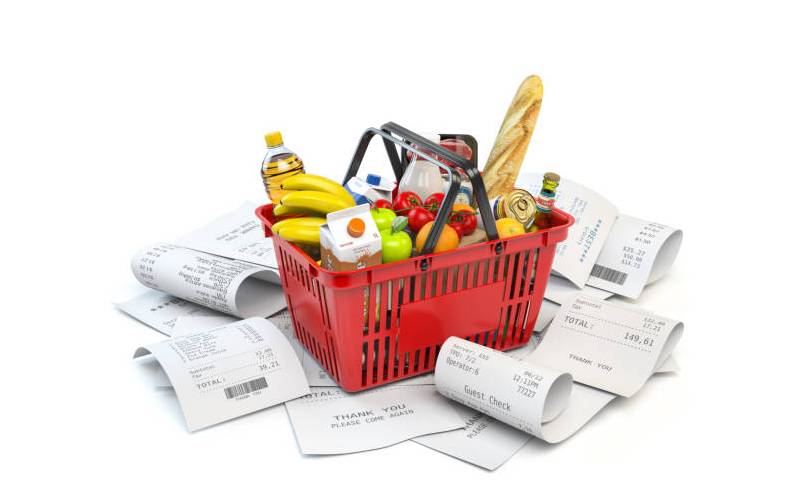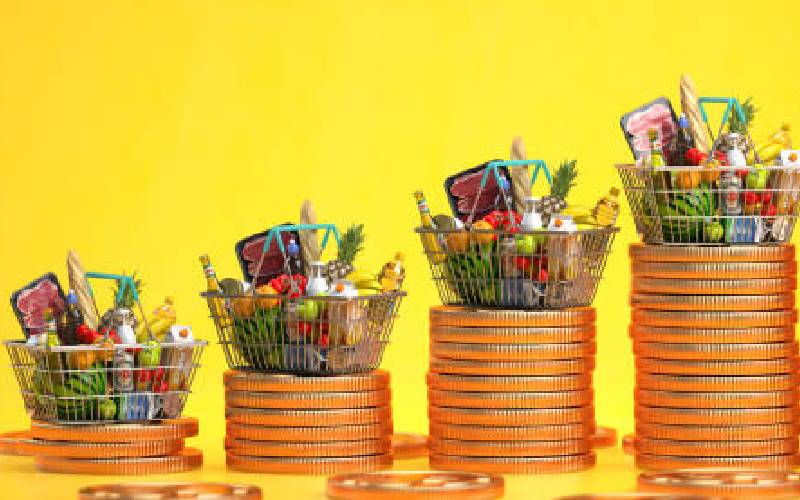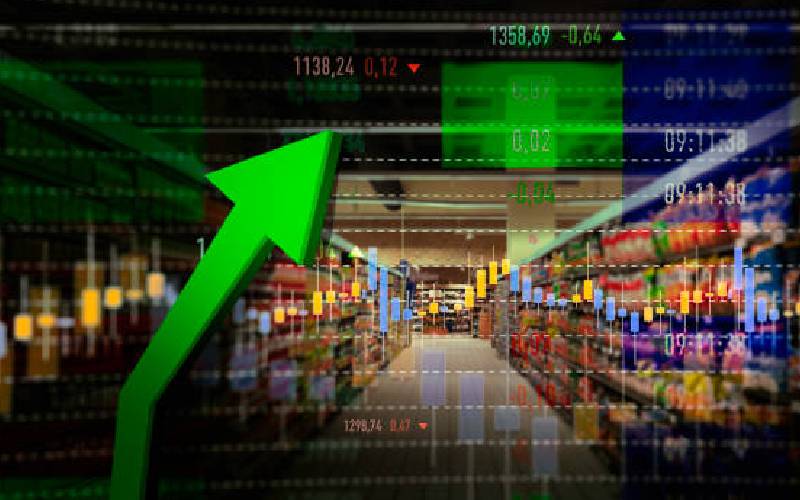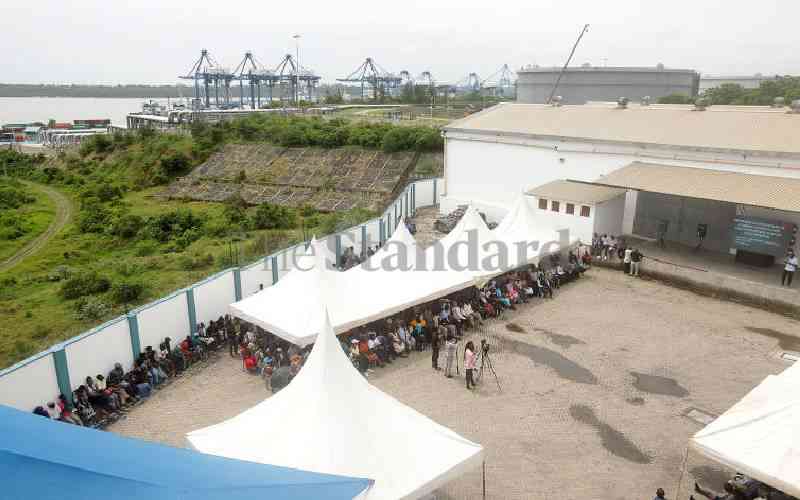
Shopping in Nairobi has turned into one of the most agonising experiences.
A spot check of the prices of basic commodities in retail stores in the capital city paints a gloomy picture of how the cost of living has skyrocketed beyond the reach of millions of Kenyans.
Some families - particularly poor ones who spend a majority of their income on food — may soon opt to skip some meals as a coping mechanism to the harsh economic realities.
This is as the prices of foodstuffs including milk, wheat flour, maize flour, rice, potatoes, and tomatoes go through the roof.
On Friday, a 500 ml of milk in most supermarkets in the city was retailing between Sh60 and Sh65, compared to between Sh50 and Sh55 a year ago.
The median price for a two-packet of maize flour, which is used to prepare ugali, a staple dish for most Kenyan households, was Sh150 compared to less than Sh120 a year ago.
In some supermarkets like QuickMart, Tom Mboya Street, a two-kilogram of maize flour, was retailing at Sh167 last week.
Data from the Kenya National Bureau of Statistics (KNBS), which collects prices around the country for a cost of living index technically known as consumer price index (CPI), showed that in May, a two-kilogramme of maize flour retailed at an average of Sh147.57 in the country, an increase of 23.8 per cent compared to last year.
Kenya is desperately hunting for maize in all corners of the world as its silos run out of this critical grain.
Bad weather, coupled with global factors such as the Russia-Ukraine war and the lingering effects of Covid-19, have conspired to create a food shortage in the country and globally, with many families finding it hard to put ugali on their dinner tables.
Rice and wheat imports have also become expensive owing to a weaker Shilling against the US Dollar.
In 2017, when the country also experienced a shortage of maize due to the drought in the region, with Uganda and Tanzania also running out of the grain, traders went as far as Mexico to ship in close to 43 per cent of its maize.
Another foodstuff whose price has jumped since the outbreak of Covid-19 and aggravated by the Russia-Ukraine conflict - is wheat.
Russia and Ukraine are some of the largest exporters of wheat, with Kenya getting close to half of its imported wheat from the two countries.
A spot check by Weekend in Business showed that a two-kilogram of wheat flour which used to retail at less than Sh130 a year ago is now retailing at over Sh200 in most of the supermarkets in Nairobi, a situation that has pushed up the cost of breakfast.
KNBS data showed that around the country, a two-kilogramme of wheat flour rose by almost a third to an average of Sh166 in May this year compared to Sh129 in May 2021.
Bread, another wheat product, has also seen its price surge in the last few months. A 400-gram loaf of white bread retails between Sh56 and Sh65. Last year, the price of a similar loaf of bread was between Sh41 and Sh60.

KNBS data showed that around the country, a 400-gram loaf of white bread retailed at an average of Sh58.15 compared to Sh53.86 in May last year.
Perhaps the item that has burrowed the deepest hole in the pockets of Kenyans and has even been a butt of jokes on social media is cooking oil. Five litres of cooking oil in the four supermarkets that were sampled sold at an average of Sh2,150 compared to around Sh1,500 last month.
Before prices of cooking oil began their climb-up, a five-litre of Fresh Fri cooking oil was retailing at below Sh1,000 in early 2020.
Currently, five litres of Fresh Fri cooking oil are retailing at Sh2,014, more than double its price in 2020. Brands like Captain Cook and Rinsun are retailing at Sh2,580 and Sh2,530 respectively.
At Naivas Supermarkets, Donholm, there was a promotion of the five-litre Golden Fry cooking oil, with shoppers paying Sh237 less. However, shoppers were restricted to only three of the products.
The high cost of cooking oil has also pushed up the price of a pack of fries by between Sh20 and Sh50 in different fast food joints in the city.
The KNBS data on CPI showed that a kilogramme of edible cooking oil rose by 47 per cent year-on-year, retailing at an average of Sh370.71 in major towns around the country compared to Sh252 in the same month last year.
Similarly, the retail price of 500 grammes of cooking fat also rose by 44.6 per cent to retail at an average of Sh175.9 compared to Sh121.7 in May last year.
The increase in the price of cooking has largely been due to a spike in the global prices of palm oil following depressed harvests.
The limited supply of palm oil has been triggered by unfavourable weather, infrastructure issues and the Covid-19 pandemic. Palm oil, the main ingredient used to manufacture cooking oil, comes from countries such as Indonesia and Malaysia.
Some of these countries, such as Indonesia, have been forced to prohibit the export of palm oil to first cater to domestic demand.
Palm oil is also used to manufacture detergents and cosmetics, which explains why you have been paying more for bar soap and laundry soap.
A kilogramme of bar soap was retailing at an average of Sh212 from the sampled supermarkets. Menengai Bar Soap, which was retailing at Sh248, was the most expensive of this sample.
For 800 grams of bar or laundry soap, consumers paid an average of Sh153.7 in May, an increase of slightly over a fifth compared to Sh122 in May last year, according to data from the national statistician.
Five hundred grams of detergents retailed at an average of Sh192.9 compared to Sh165.5.

A kilogramme of Cleanshelf sugar, at Clean Shelf Supermarket in Ronga, Kajiado County, which just last week was retailing at Sh120 was retailing at Sh125.
In the same retail store, a litre of KCC Mala milk, which was once retailing at Sh137, is now at Sh150.
Prices of rice, sugar, and tissue paper have also increased, with data from the national statistician showing that the cost of living continued to worsen after prices of goods and services increased by 7.1 per cent in May, the highest level in two years.
The increase in prices of goods and services known as the inflation rate is the highest since February 2020. Last month, a lot of Kenyans were forced to dig deeper into their pockets to pay for basic commodities, especially foodstuff, according to KNBS.
There was no respite for motorists despite the fuel subsidy. A litre of kerosene, diesel and petrol rose by 21.3 per cent, 21.5 per cent and 18.7 per cent respectively in the period under review.
Lending rate
This is even as the Central Bank of Kenya (CBK) sought to slam the break on the fast pace at which prices increased by raising its benchmark lending rate for the first time in seven years.
By raising its benchmark lending rate or the Central Bank Rate (CBR) - the rate at which CBK lends to banks who then lend to businesses and households, the financial regulator was signalling higher interest rates charged by banks which would then reduce the supply of money into the economy.
With CBK expected to keep the inflation rate at between 2.5 per cent and 7.5 per cent, it is afraid that the country would soon be dealing with a situation where there is too much money chasing too few goods.
“The Monetary Policy Committee (MPC) saw there is a clear and present danger of breaching the 7.5 per cent band in the next few months and thus decided to increase the CBR, our signal rate,” said CBK Governor Dr Patrick Njoroge in a recent post-MPC press briefing.
The economy is not yet out of the words with official data showing that prices of goods and services increased at a faster rate than wages for workers last year. Last year, the economy grew by 7.2 per cent as it recovered from the after-shocks of Covid. However, the International Monetary Fund (IMF) expects it to slow down to 5.7 per cent this year.
Kenya is mostly importing the high cost of living in advanced countries with the war in Ukraine exposing the weaknesses of globalisation, said Dr Patrick Njoroge.
“In Kenya, we are an open economy…we are not an island,” he said, noting that the policy choices for policymakers are narrow.
Kenya has waived the import duty on maize and fertiliser in what is aimed at bringing down the cost of food.
Additional reporting by Peter Theuri and Graham Kajilwa
 The Standard Group Plc is a multi-media organization with investments in media platforms spanning newspaper print
operations, television, radio broadcasting, digital and online services. The Standard Group is recognized as a
leading multi-media house in Kenya with a key influence in matters of national and international interest.
The Standard Group Plc is a multi-media organization with investments in media platforms spanning newspaper print
operations, television, radio broadcasting, digital and online services. The Standard Group is recognized as a
leading multi-media house in Kenya with a key influence in matters of national and international interest.











